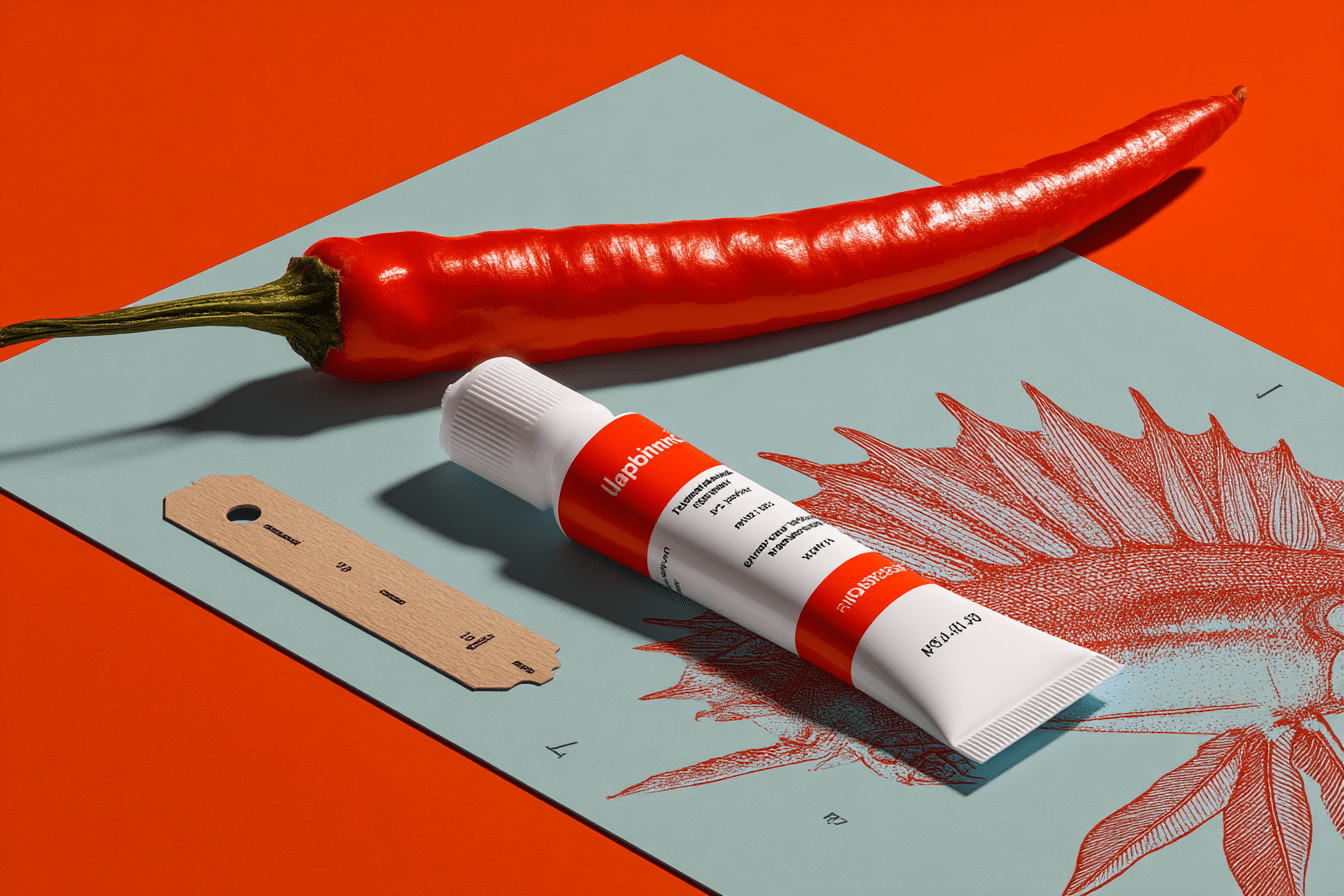- Home
- CHS Research
- Spicy Relief - The Science Behind Capsaicin Cream for CHS Symptoms

Spicy Relief? The Science Behind Capsaicin Cream for CHS Symptoms
You're in the throes of a Cannabinoid Hyperemesis Syndrome (CHS) attack. The nausea is relentless, the vomiting won't stop, and maybe only a scalding hot shower brings temporary peace. Then someone mentions... chili pepper cream? Yep, capsaicin cream, the stuff usually used for arthritis or muscle pain, has emerged as a surprising tool for managing CHS symptoms.
But how does rubbing something hot on your belly potentially calm the chaos inside? It's not magic; it's (mostly) about a specific receptor in your body.
First, What is Capsaicin Cream?
Capsaicin is the active compound in chili peppers – it's what makes them spicy! In cream form, it's concentrated and designed to be applied topically (on the skin). It works by creating a warming or burning sensation.
Meet the Star Player: The TRPV1 Receptor
The science behind capsaicin's effect, especially concerning CHS, revolves heavily around something called the TRPV1 receptor (Transient Receptor Potential Vanilloid 1). Think of TRPV1 as a tiny sensor or "gate" on your nerve cells.
- What does TRPV1 sense? Primarily heat, harsh chemicals (like capsaicin), and inflammatory signals. It plays a big role in detecting pain and heat.
- Where is it found? Lots of places! Crucially for us, it's found in nerve endings in your skin, but also significantly within your gut and parts of your nervous system involved in nausea and pain regulation.
How Capsaicin Interacts with TRPV1
When you apply capsaicin cream to your skin:
- Activation: Capsaicin binds strongly to and activates those TRPV1 receptors in your skin's nerve endings.
- The "Burn": This activation sends signals to your brain that are interpreted as heat or burning – the familiar sensation from the cream.
- Desensitization (The Key Part!): Here's the cool bit. With prolonged or intense activation (like from the cream), the TRPV1 receptor can become "overwhelmed" or desensitized. It essentially gets tired out and stops responding as strongly, or stops sending signals for a while. This desensitization is why capsaicin cream is used for chronic pain – it eventually dulls the pain signals from the treated area.
Connecting Capsaicin, TRPV1, and CHS Symptom Relief
Now, let's link this to CHS relief:
- The CHS/TRPV1 Theory: One leading theory about CHS suggests that chronic, heavy cannabis use dysregulates the endocannabinoid system and potentially makes TRPV1 receptors in the gut hypersensitive or overactive. This overactivity might contribute directly to the intense nausea, vomiting, and abdominal pain characteristic of CHS.
- The Capsaicin "Hack": When you apply capsaicin cream to your abdomen, you're intensely activating the TRPV1 receptors in the skin over that area. The proposed mechanisms for relief include:
- Neural "Distraction"/Gate Control: The strong heat/burn signal from the skin might effectively "shout louder" than the nausea/pain signals coming from the overactive gut TRPV1 receptors. This intense competing signal could potentially "close the gate" further up the nervous system, reducing the perception of nausea and pain (similar to the Gate Control Theory of Pain).
- Systemic Effects (Less Clear): It's less understood if topical application significantly desensitizes the gut TRPV1 receptors directly, but the strong neural input from the skin definitely plays a role.
- Modulation of Brain Centers: The intense stimulation might also influence brain areas involved in processing nausea and pain.
The Hot Shower Connection!
Guess what else powerfully activates TRPV1 receptors? Heat! This is the most likely scientific reason why those near-scalding hot showers bring CHS relief. The intense heat activates skin TRPV1 receptors all over, creating a similar (but perhaps more widespread) desensitization or neural distraction effect as the capsaicin cream. Capsaicin cream is essentially a way to try and achieve a similar receptor interaction without needing constant access to a shower.
Using Capsaicin Cream for CHS: Important Considerations
- It's Symptom Management, NOT a Cure: This is critical. Capsaicin cream doesn't fix the underlying CHS. It only offers potential temporary relief from symptoms during an episode. The only way to cure CHS is cannabis cessation.
- Use With Caution:
- Start with a very small amount to test sensitivity.
- Apply only to the abdomen.
- It WILL cause a burning sensation – that's how it works.
- Wash hands THOROUGHLY with soap and water after applying. Avoid touching eyes, mouth, or other sensitive areas.
- Don't apply to broken or irritated skin.
- Talk to Your Doctor: Discuss using it, especially if you have other skin conditions or health issues.
The Takeaway: A Clever (Temporary) Coping Tool
The science behind capsaicin cream for CHS relief hinges on its interaction with the TRPV1 receptor – the same receptor likely involved in CHS pathology and the hot shower phenomenon. By intensely activating and potentially desensitizing these receptors via the skin, capsaicin cream may offer a much-needed, temporary break from debilitating nausea and pain.
It's a fascinating example of how understanding the body's signaling pathways can lead to unexpected ways to manage symptoms, while always remembering the ultimate goal for CHS sufferers: stopping cannabis use for long-term recovery.
Have you tried capsaicin cream for CHS? Did it help? Share your experience or questions in the comments!
Disclaimer: This information is for educational purposes. It is not medical advice. Consult a healthcare professional before using any new product or treatment, especially for a condition like CHS. If experiencing severe symptoms, seek immediate medical attention.
